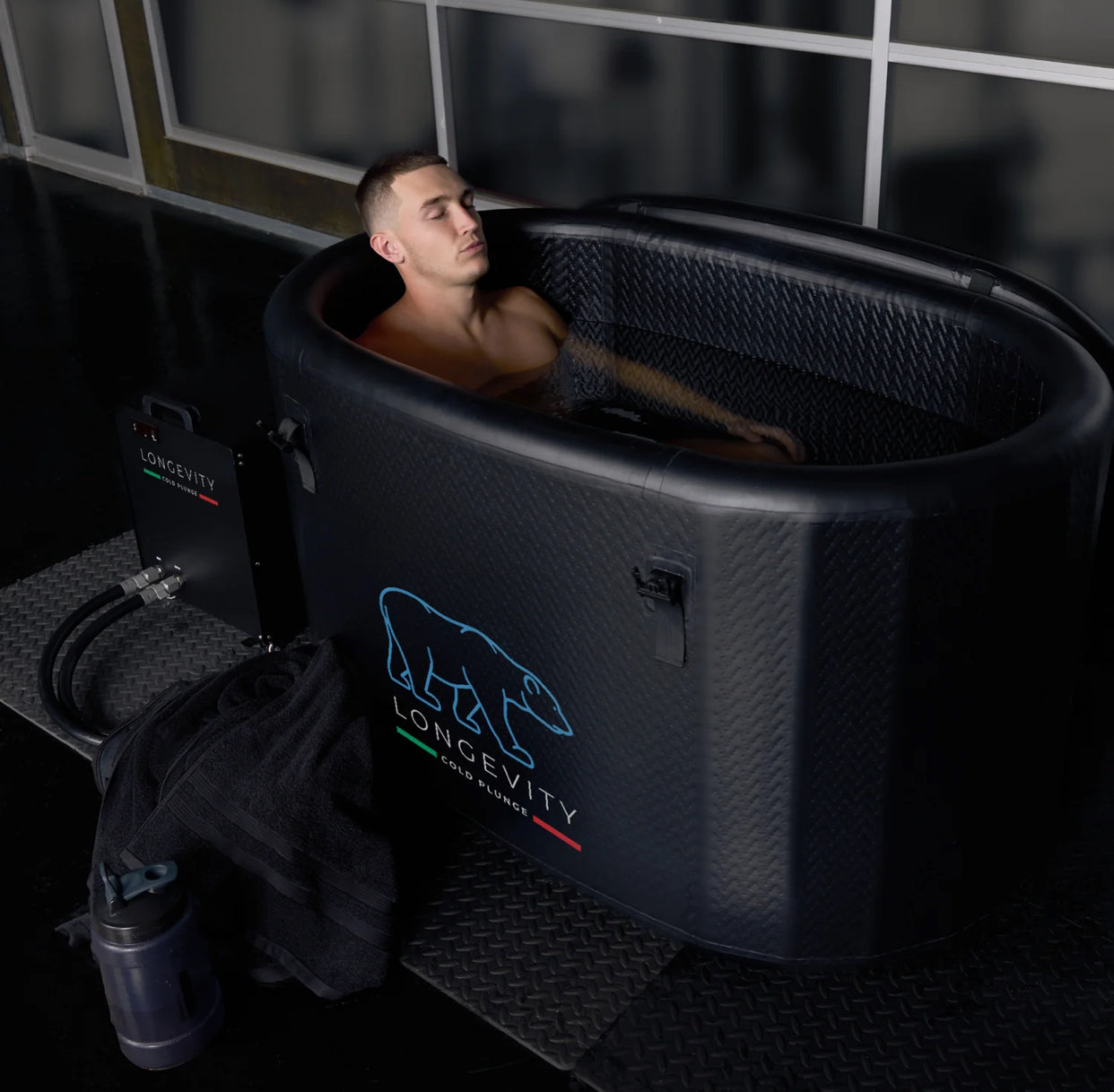Thinking of turning your bath into a cryo-chamber? Good shout! To Cold Plunge properly, you need an Ice Bath between 7–15 °C, 2–5 minutes of chill time, and steady breathing. This guide shows you how to use your Cold Plunge Tub or Ice Bath Tub the right way—without turning into a popsicle.

2. The Essentials of Cold Plunging: Understanding and Preparation
2.1. What is Cold Plunging and Why Do It?
2.1.1. Defining Cold Water Immersion
Cold water immersion is submerging your body in very cold water, usually between 7–15 °C. It’s a form of therapy used for recovery, wellness, and mental resilience.
2.1.2. The Science Behind the Chill: Physiological and Neurological Responses
Exposure triggers vasoconstriction, reducing swelling and inflammation. It also spikes adrenaline and noradrenaline, improving alertness, mood, and stress resilience.
2.2. Prioritising Safety: Before You Begin
2.2.1. Consulting Your Healthcare Provider
If you have heart issues or health conditions, talk to your GP before plunging in. Safety first!
2.2.2. Gradual Acclimatisation and Listening to Your Body
Start with shorter, warmer sessions. Pay attention to shivering, numbness, or discomfort. Don’t push beyond safe limits.
2.2.3. Essential Pre-Plunge Practices (Hydration, Nutrition, Supervision)
Stay hydrated, avoid heavy meals just before, and have someone nearby if you’re new.
2.3. Setting Up for Success: Your Cold Plunge Environment
2.3.1. Choosing Your Plunge Method
Options include an Ice Bath Tub, Cold Plunge Tub, or simple bath with ice bags.
2.3.2. Finding Your Ideal Temperature (Beginner to Advanced)
Beginners can aim for 10–15 °C, while advanced users may go as low as 7 °C.
2.3.3. Maintaining Hygiene
Clean the tub regularly, rinse off before entering, and avoid lotions or oils.
3. Mastering Your Cold Plunge Technique
3.1. The Plunge Itself: Entry and Immersion
3.1.1. Controlled Entry: No Sudden Shocks
Step in slowly to avoid panic or injury. Take time to adjust.
3.1.2. Optimal Submersion: Shoulders, Neck, and Beyond
Aim to submerge up to the neck for maximum benefit.
3.2. Breathing and Duration: Key to a Successful Plunge
3.2.1. Breathing Techniques for Calm and Control
Use slow, deep breathing to manage the cold shock and stay relaxed.
3.2.2. Recommended Timeframes for Different Goals and Experience Levels
Beginners: 1–2 minutes. Experienced: 3–5 minutes. Repeat 2–4 times per week.
3.2.3. Recognising When to Exit Safely
Leave if you feel dizzy, numb, or breathless. Always listen to your body.
3.3. Post-Plunge Recovery: Warming Up the Right Way

3.3.1. Gentle Rewarming Strategies
Use warm clothes and mild movement rather than hot showers immediately.
3.3.2. Avoiding Common Post-Plunge Mistakes
Don’t rush into heat too fast—it can cause blood pressure changes.
4. Unlocking the Benefits: Why Cold Plunge?
4.1. Impact on Physical Health
4.1.1. Muscle Recovery and Pain Relief
Reduces inflammation and soreness after workouts.
4.1.2. Boosting Circulation and Metabolism
Alternating constriction and dilation improves blood flow and can boost calorie burn.
4.1.3. Strengthening Your Immune System
Cold exposure may enhance immune response over time.
4.2. Enhancing Mental Well-being
4.2.1. Mood Regulation and Stress Resilience
Spikes endorphins and noradrenaline, lifting mood and building mental toughness.
4.2.2. Improving Focus and Mental Clarity
The cold shock wakes you up like strong coffee!
4.2.3. The Role of Cold in Building Toughness
Regular plunging trains you to stay calm in discomfort.
5. Conclusion
Cold plunging is a simple, budget-friendly wellness ritual you can do at home with an Ice Bath Tub or Cold Plunge Tub. It helps your body and mind recover, build resilience, and stay sharp. Start slow, stay safe, and enjoy the bracing benefits!
6. Takeaways
-
Ideal temperature: 7–15 °C
-
Timeframe: 1–5 minutes
-
Frequency: 2–4 times/week
-
Focus on breathing and safety
-
Great for body recovery and mental health






